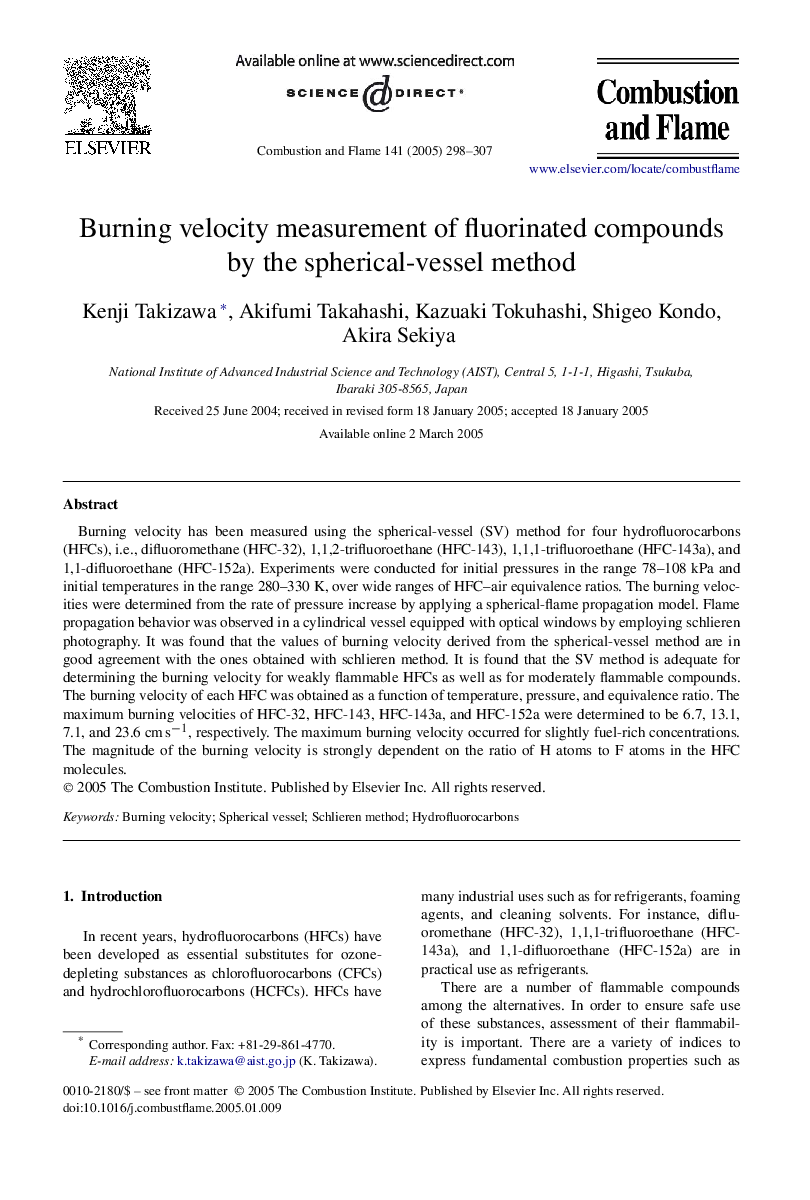| Article ID | Journal | Published Year | Pages | File Type |
|---|---|---|---|---|
| 10264479 | Combustion and Flame | 2005 | 10 Pages |
Abstract
Burning velocity has been measured using the spherical-vessel (SV) method for four hydrofluorocarbons (HFCs), i.e., difluoromethane (HFC-32), 1,1,2-trifluoroethane (HFC-143), 1,1,1-trifluoroethane (HFC-143a), and 1,1-difluoroethane (HFC-152a). Experiments were conducted for initial pressures in the range 78-108 kPa and initial temperatures in the range 280-330 K, over wide ranges of HFC-air equivalence ratios. The burning velocities were determined from the rate of pressure increase by applying a spherical-flame propagation model. Flame propagation behavior was observed in a cylindrical vessel equipped with optical windows by employing schlieren photography. It was found that the values of burning velocity derived from the spherical-vessel method are in good agreement with the ones obtained with schlieren method. It is found that the SV method is adequate for determining the burning velocity for weakly flammable HFCs as well as for moderately flammable compounds. The burning velocity of each HFC was obtained as a function of temperature, pressure, and equivalence ratio. The maximum burning velocities of HFC-32, HFC-143, HFC-143a, and HFC-152a were determined to be 6.7, 13.1, 7.1, and 23.6 cmâsâ1, respectively. The maximum burning velocity occurred for slightly fuel-rich concentrations. The magnitude of the burning velocity is strongly dependent on the ratio of H atoms to F atoms in the HFC molecules.
Related Topics
Physical Sciences and Engineering
Chemical Engineering
Chemical Engineering (General)
Authors
Kenji Takizawa, Akifumi Takahashi, Kazuaki Tokuhashi, Shigeo Kondo, Akira Sekiya,
